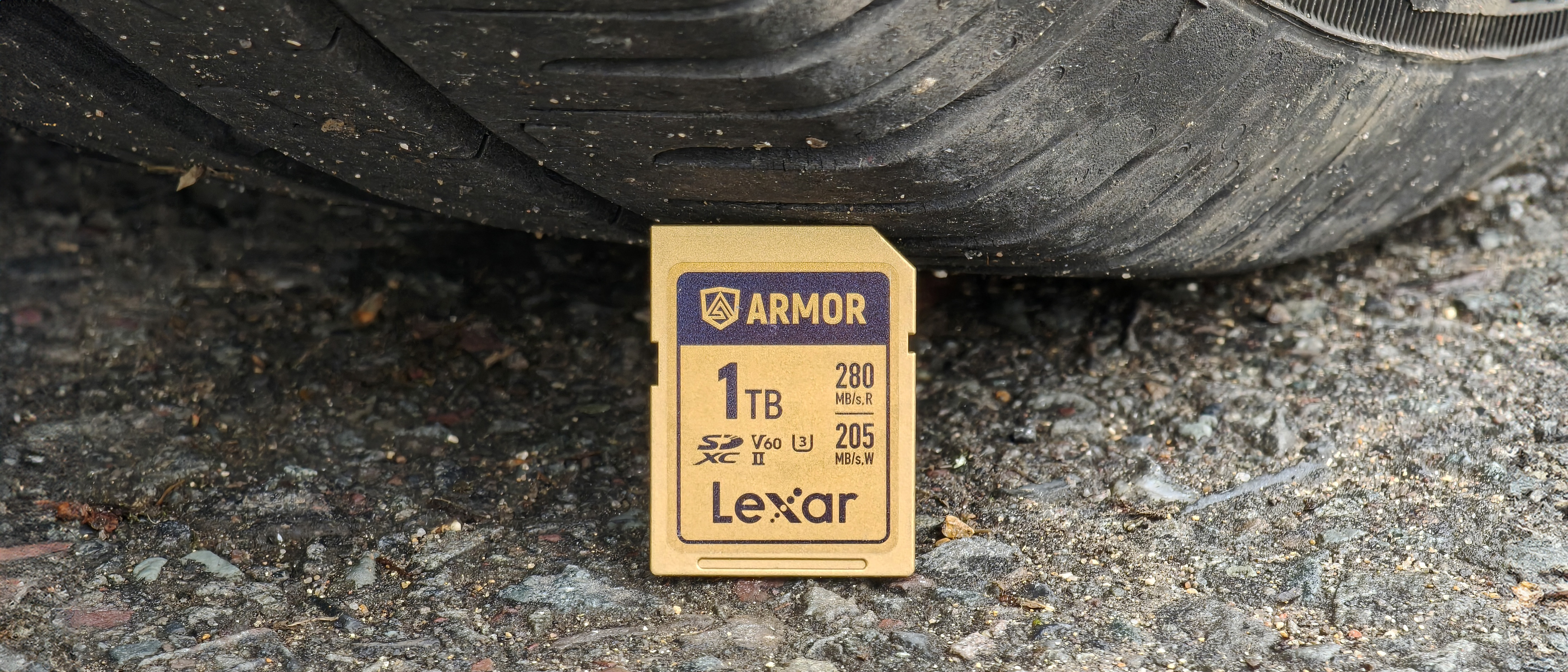Digital Camera World Verdict
Constructed from stainless steel rather than the usual plastic, the Lexar Armor Gold SDXC UHS-II card is claimed to be substantially stronger than a regular SD card. We put that claim to the test in a series of challenges, and were not disappointed. This is an incredibly tough SD card which you can be confident will survive any normal abuse, and even some abnormal scenarios. It also boasts fast transfer speeds and comes in plenty of capacity options. Factor the fair pricing and the Lexar Armor Gold SDXC UHS-II card is a must-buy if you want to safeguard your data.
Pros
- +
Incredibly tough
- +
Clever design
- +
Fast enough
- +
Fair pricing
Cons
- -
Could be slightly quicker
Why you can trust Digital Camera World
The humble SD card has been with us since 1999, and in that time capacity and speed have grown dramatically. We've also had cards with built-in Wi-Fi, but externally the format has remained pretty-much unchanged: one or two rows of electrical contacts, set into a plastic shell.
But not any more. With its Armor Gold SDXC card, Lexar has swapped the plastic for a stainless steel construction that's claimed to be 37x stronger than a conventional, plastic SD card.
Features
I have to admit that when I first saw the pre-launch press release for the Armor Gold SD card, I was sceptical. Sure, metal is usually stronger than plastic, but it can still bend, especially when it's as thin as an SD card. Could the Armor Gold card really be usefully stronger than a normal, plastic SD card?

Lexar, to its credit, does back up its toughness claims with some statistics. That "37x stronger" figure refers to the card being able to withstand 370 newtons of bending, compared to just 10 newtons that Lexar says a plastic SD card can survive (we'll be testing this claim later). Furthermore, the Armor Gold card is also IP68 dust- and water-resistant, it's built to survive drops from up to 5 meters, and it's said to be magnet-, static-, X-Ray-, UV- and temperature-resistant. That's a lot of resistance.

Then there are the subtle, yet commendable details: the write protect switch has been ditched, presumably to increase the rigidity of the metal body, and to help with water resistance (and let's face it, who actually uses the write-protect switch, anyway?).
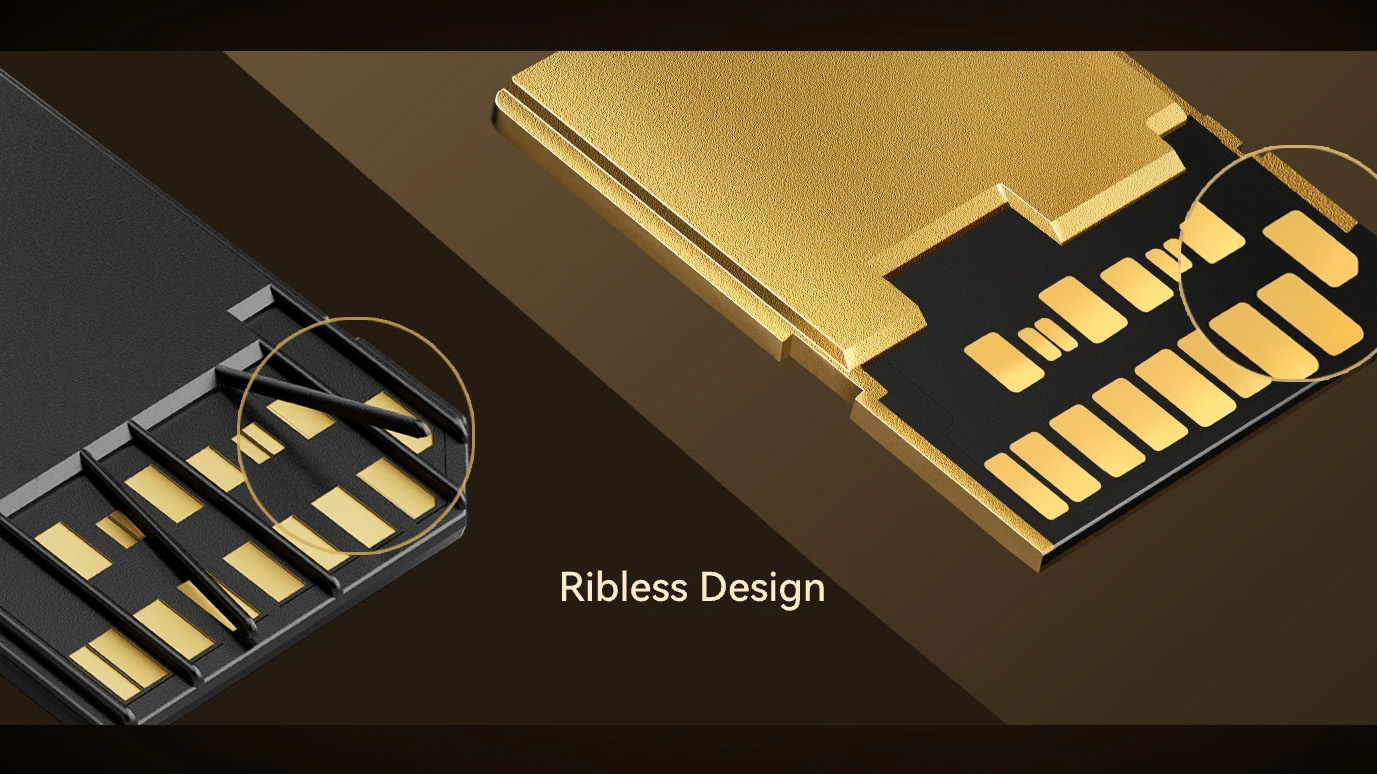
I also appreciate that Lexar has deleted the thin plastic 'ribs' that sit between the contact pads on most SD cards, as these are always a vulnerable point of weakness. Finally, where most SD cards have a printed label to provide brand, speed and capacity information, the Armor Gold's graphics are laser-etched, so they're much less likely to wear away.
Despite all this extra toughness, Lexar maintains that an Armor Gold card is no thicker than a plastic SD card, so it should still fit in any compatible host device. What's more, with a metal rather than plastic shell, heat dissipation from the memory chips within should - theoretically - be improved.
The best camera deals, reviews, product advice, and unmissable photography news, direct to your inbox!
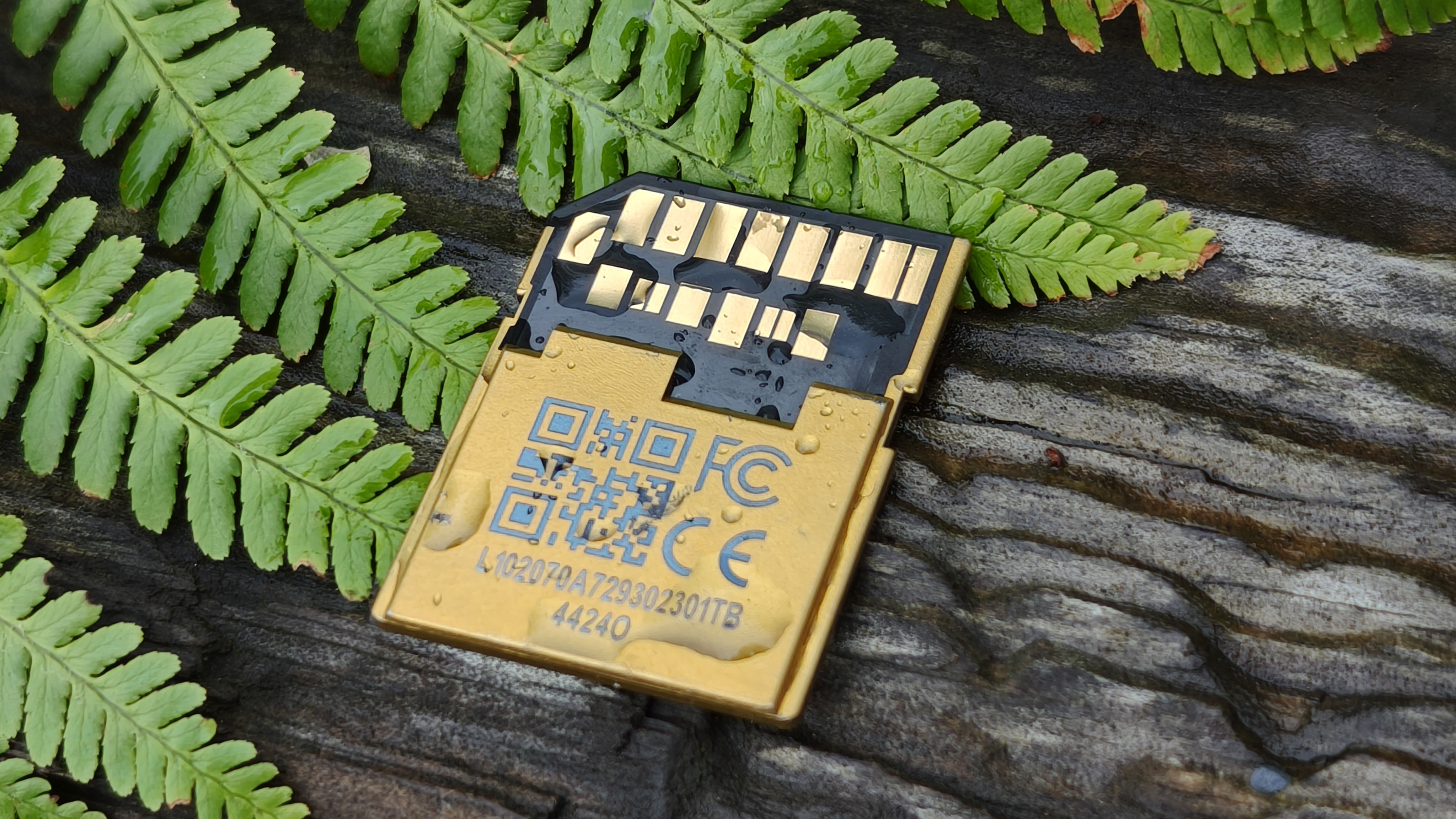
The 1TB Armor Gold card we're testing here is rated at a maximum 280MB/s read speed and has a 205MB/s peak write speed. This is made possible by its UHS-II interface, which also helps it achieve a V60 video speed rating, meaning it should be capable of sustaining at least 60MB/s when recording video. While there are faster UHS-II SDXC cards on the market, the Armor Gold's performance specs are still respectable, and chances are if you've got a camera that needs even faster memory, you'd be using a CFexpress card anyway.
Armor Gold cards are available in 64GB, 128GB, 256GB, 512GB and 1TB capacities. The top three capacities have the 205MB/s max write speed, but strangely the 64GB and 128GB versions are a touch faster, at 210MB/s (usually smaller capacities tend to have slower speed ratings when it comes to memory cards and SSDs).
Performance
I ran my go-to speed test benchmarking software for memory cards - CrystalDiskMark - to test Lexar's speed claims for the Armor Gold card. I use a modern Windows laptop for my performance tests, as its USB4 connection is more than fast enough to max out the speed of any SDXC card, ensuring no hardware bottlenecks. My card reader of choice is a ProGrade Digital PGM0.5 SDXC/microSDXC UHS-II Dual-Slot Mobile Card Reader. This is a USB 3.2 Gen 2 reader which, like the laptop, is capable of maximum transfer speeds far higher than the Armor Gold card can reach.
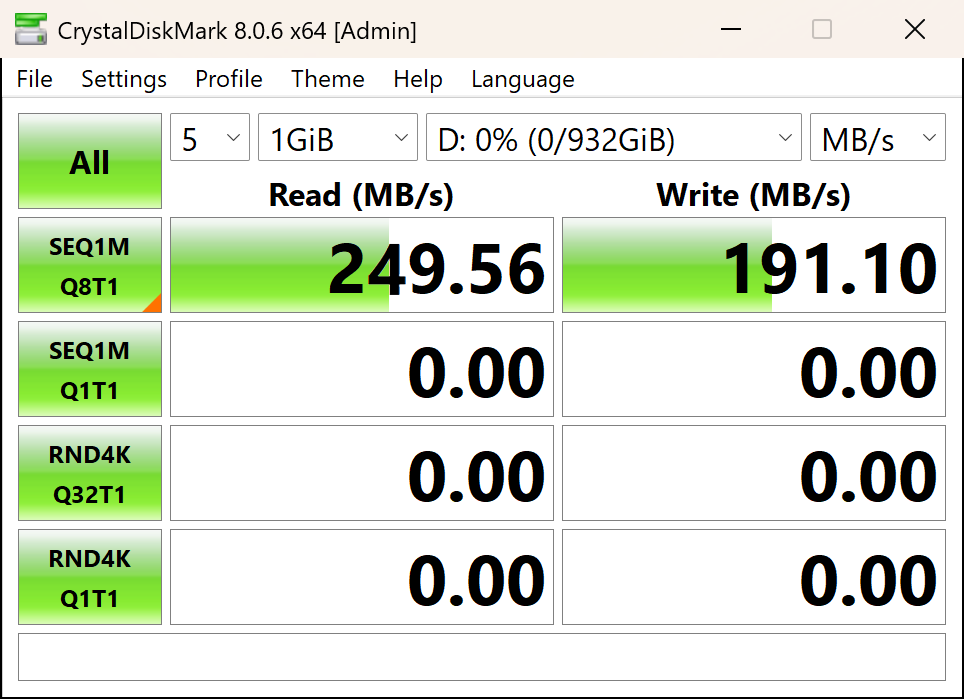
But try as I did, I couldn't quite match Lexar's advertised speeds, being 30MB/s short of the claimed peak read speed, and around 15MB/s down on the specified write rate. Even so, my results are far from disappointing, as this is still a fast SD card.
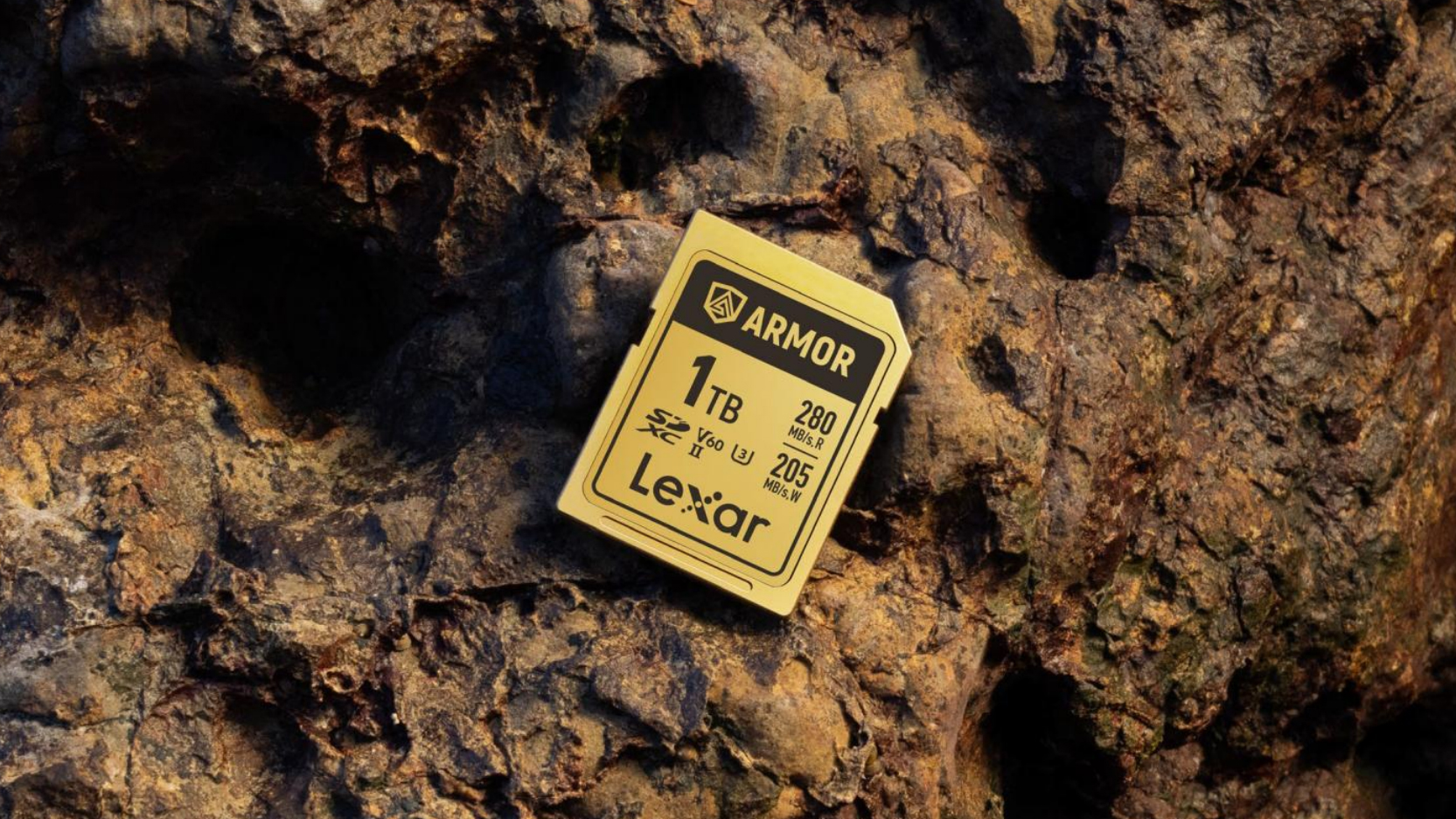
To see how the Armor Gold card performs in real-world file transfers, I took a single large video file, as well as a folder full of small images, and moved both to and from the SD card, to see what sort of read and write speeds you can expect during typical use:
| Header Cell - Column 0 | Read (peak) | Write (peak) |
|---|---|---|
Large single file | 236.7 (246) MB/s | 174.6 (181) MB/s |
Multiple small files | 231.6 (241) MB/s | 155.7 (165) MB/s |
Moving multiple small files will always take a little longer than a single file of the same total size, so reduced transfer speeds are usually inevitable. However, the Armor Gold card achieved speeds impressively close to those recorded by CrystalDiskMark.
Toughness testing
At this point with most SD cards I'd go straight to my verdict. But the Armor Gold card is more about toughness than speed, so it'd be irresponsible not to test its ruggedness.
Firstly, bend resistance. Lexar states that the Armor Gold features "a bending resistance of up to 370 Newtons", and it has produced a seemingly rendered graphic to illustrate this. Consequently, it's not clear how Lexar actually conducted this test, as pressure is relative to the physical area across which it is being applied, and that crucial test detail isn't revealed.

So with insufficient information about Lexar's testing methodology to exactly replicate its bend test myself, I had to invent my own method. I positioned the SD card so it formed a bridge between two raised, stout surfaces, which would allow the center portion of the card to bend into the void when downward pressure was applied. I then partially slotted a strip of metal into a block of wood, so the exposed edge of the metal would contact straight across the width of the SD card.
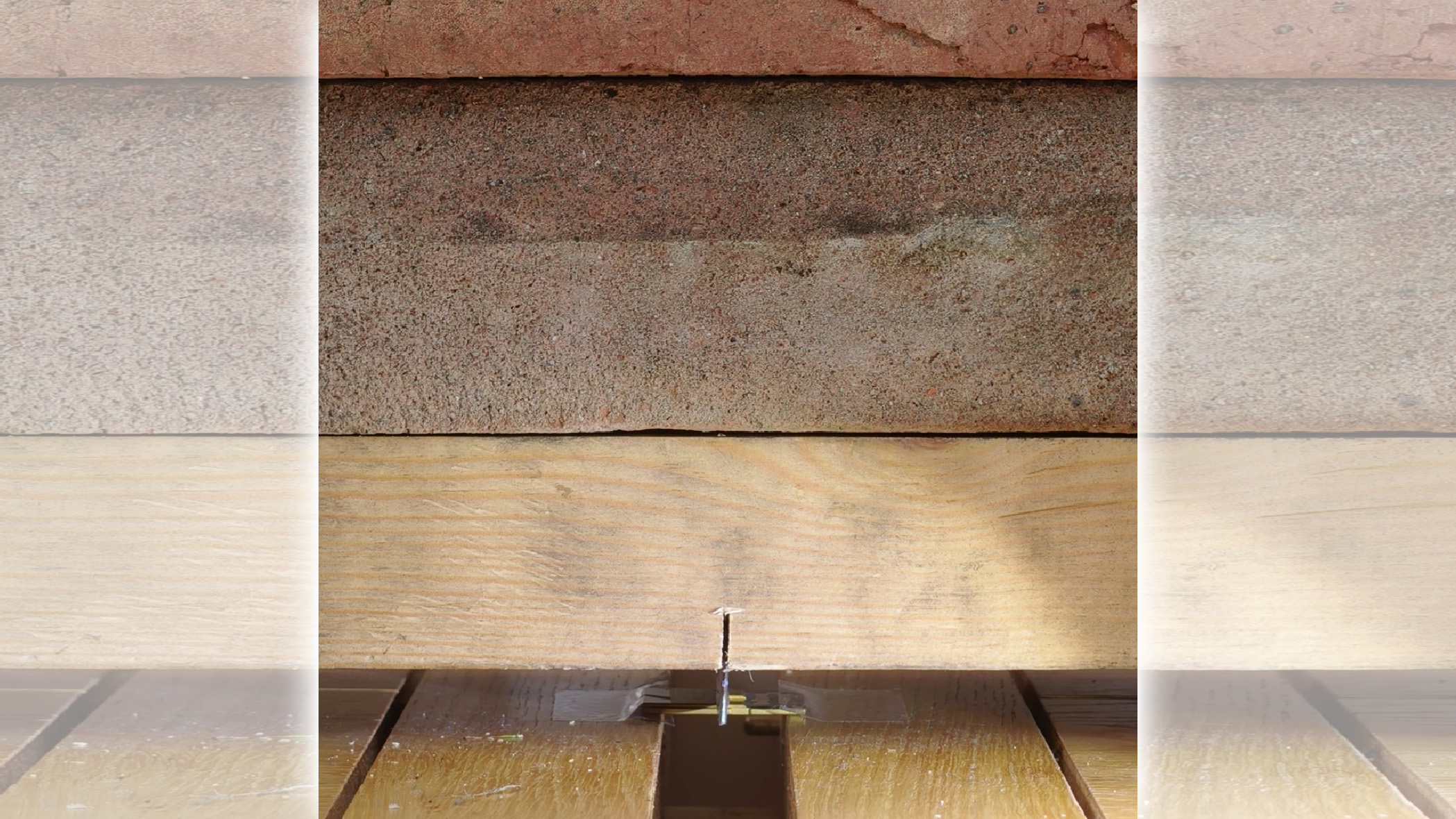
Now all I needed was plenty of weight to stack on the card, via the metal pressure point and its wooden holder. For this I used the industry-standard tool for testing SD card bend resistance: house bricks. I bribed my 7 year old son to stack the bricks on top of the Armor Gold card one by one, while I steadied the wooden 'carrier' so all the pressure was exerted onto the SD card via the metal strip. Watch the video below to see whether the Armor Gold card survived:
I genuinely wasn't expecting the card to perform anywhere near as well as it did in this test. To hardly bend at all with that amount of weight concentrated across such a narrow sliver of card is incredible. The total weight of the four bricks plus the wooden carrier is 10kg. Now consider that that weight is focussed into a strip of metal just 1mm in thickness, resting on its edge across the middle of the SD card. An SD card is 24mm wide, so that's 24 square millimetres of contact patch. Convert 10kg and 24mm into freedom units and you get 22.05lb of force, multiplied by 0.0372 square inches of contact patch. Then scale the weight in line with the contact patch and you end up with a bending pressure of 593PSI.
All well and good, but for comparison we also need to know how much bending pressure a conventional, plastic SD card can withstand. So I performed the exact same test with just such a card, and the difference was profound:
Under the weight of just one brick, the card was visibly bending. By three bricks it was bent so badly that the internals had probably already been destroyed. Add the fourth brick and the plastic didn't split in two, but the electrical contacts did part company with the rest of the card, and the card won't be sliding into a camera any time soon.
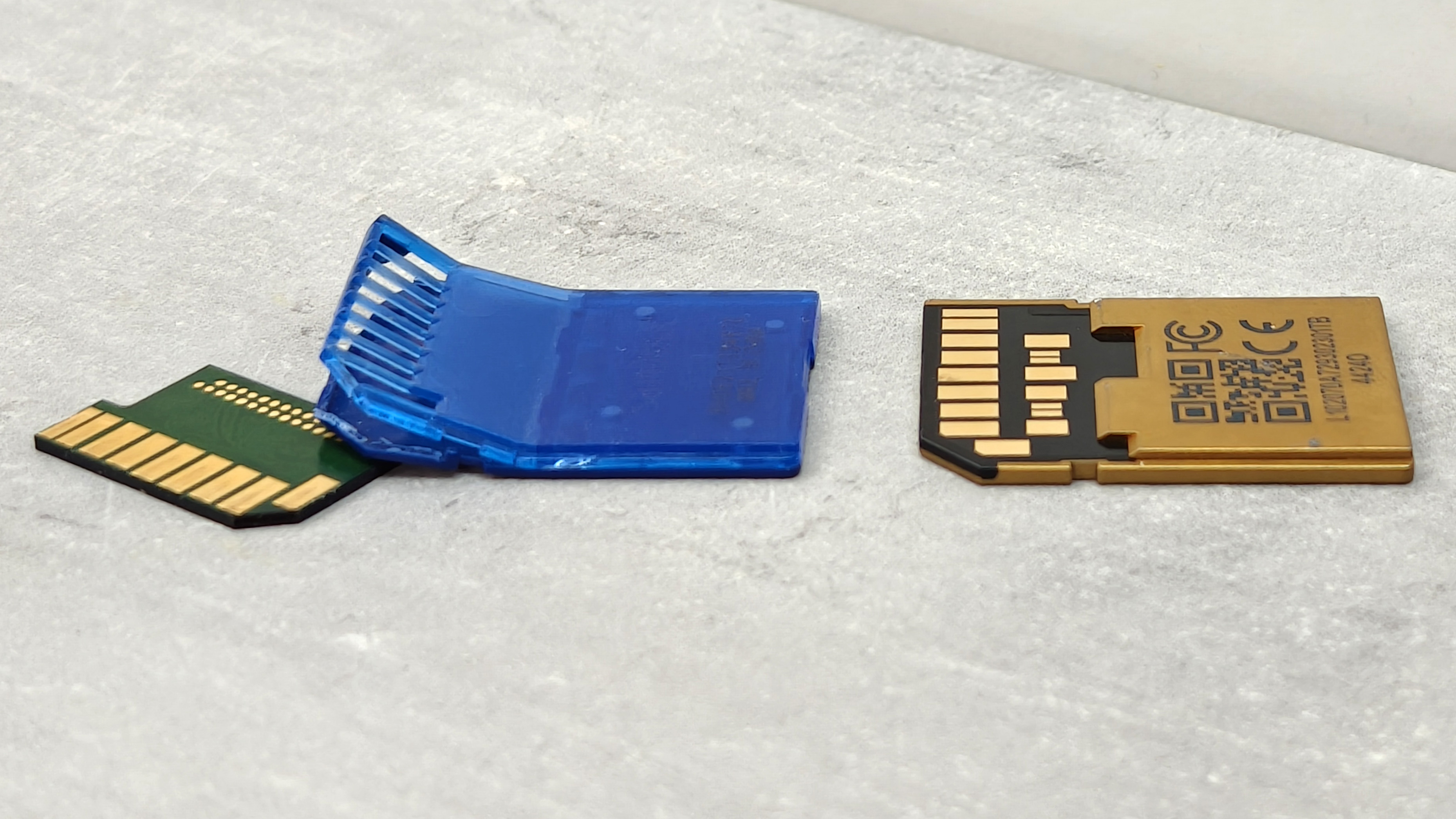
The Armor Gold card worked just fine after my bend test, and it was also unscathed by a drop from over the rated 5-meter height. A dunking into a sink-full of water was of no issue either. I was fast running out of ways to kill the Armor Gold card, so I decided to give it the ultimate test: could it survive being run over by a car? To be clear, Lexar in no way suggests the card could survive this - I just wanted to try it for your (and my) morbid curiosity. And as this is a review sample card, my own money wasn't on the line!
I was assuming the card would emerge somewhat squashed, dented or bent, but it survived almost entirely unscathed - just one light scratch. I therefore had high hopes that I could plug the card right back into my computer and it would work perfectly, but alas, it was not to be. While the computer did detect the card upon insertion, it couldn't be accessed. I tried to reformat it using specialist software, but again, nothing. I suspect that although the metal casing evidently 'bounced back' from being squashed, the memory chips within were crushed to oblivion. Still, unless you're a complete klutz and leave your Armor Gold card directly in the path of a passing car, you can be confident that it'll survive all but the most gratuitous abuse.
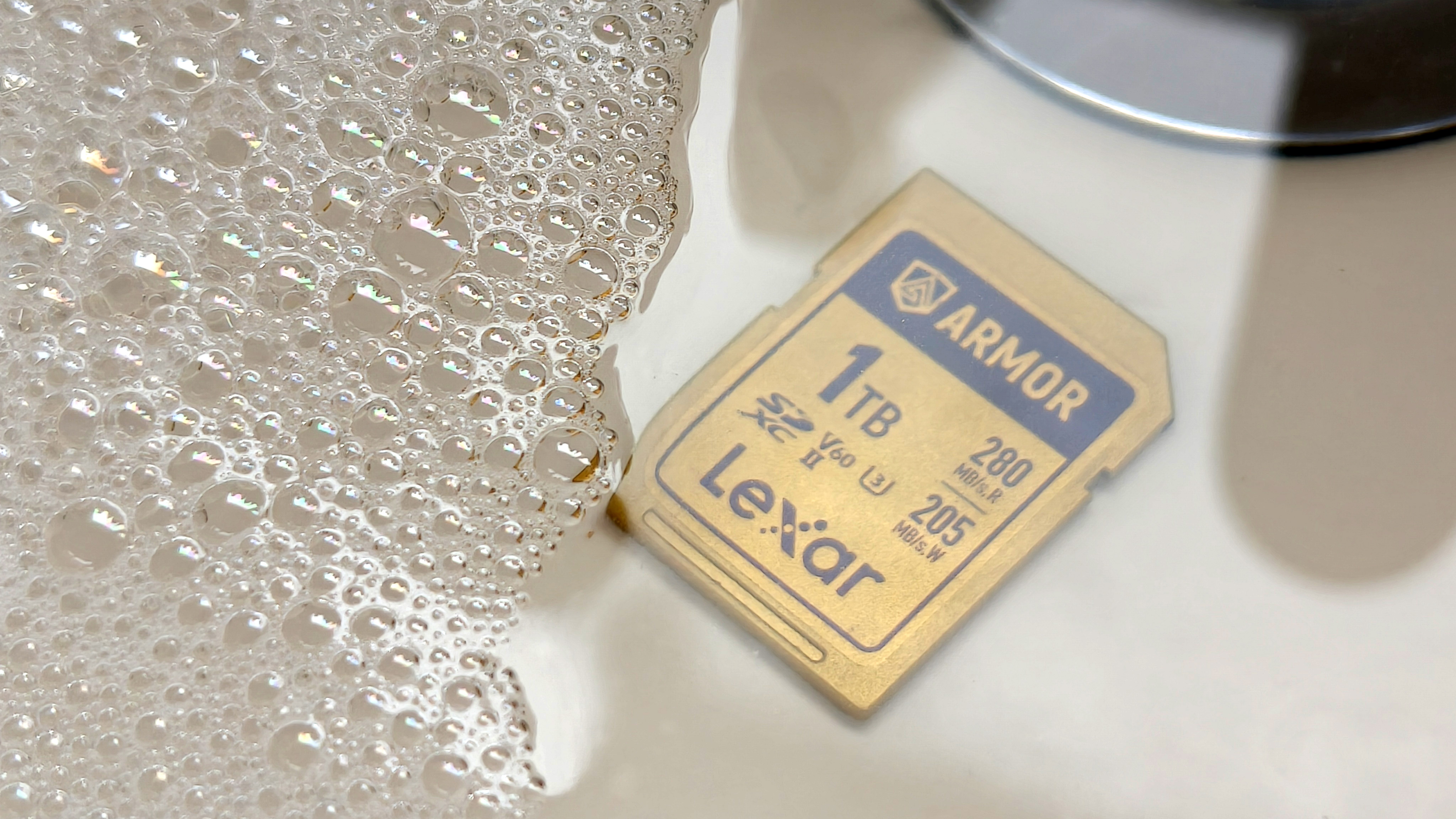
Verdict
Innovation is hard to find in the SD card sector: you can make a card faster, and give it more capacity, and that's normally about it. But what Lexar has done here is quite remarkable. The toughness is certainly no gimmick: the Armor Gold card is way, way stronger than a regular SD card. It's so tough that, based on my testing, I'd trust it to survive any reasonable abuse without so much as a scratch.
In terms of file transfer speed, I couldn't quite match Lexar's read/write speed claims, but many other SD cards also come up a bit short in this respect, and the card is still comfortably fast enough for high-res continuous shooting or recording 4K video.
Naturally, you pay a premium for the Armor Gold's toughness: a (plastic) 256GB Lexar Professional Gold series UHS-II card with the same 280MB/s read and 205MB/s write speeds currently costs around $70, whereas a 256GB Armor Gold card will set you back $120. But there are also plenty of regular plastic SD cards that cost more than an equivalent capacity Armor Gold card - Lexar's pricing isn't unreasonable.
So if your data is precious, or if you regularly shoot in adverse conditions where there's a real possibility of card damage, paying a little extra for an Armor Gold card is well worth it for peace of mind.
Ben is the Imaging Labs manager, responsible for all the testing on Digital Camera World and across the entire photography portfolio at Future. Whether he's in the lab testing the sharpness of new lenses, the resolution of the latest image sensors, the zoom range of monster bridge cameras or even the latest camera phones, Ben is our go-to guy for technical insight. He's also the team's man-at-arms when it comes to camera bags, filters, memory cards, and all manner of camera accessories – his lab is a bit like the Batcave of photography! With years of experience trialling and testing kit, he's a human encyclopedia of benchmarks when it comes to recommending the best buys.
You must confirm your public display name before commenting
Please logout and then login again, you will then be prompted to enter your display name.
